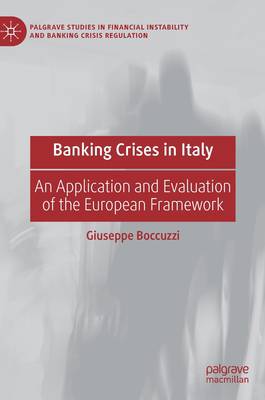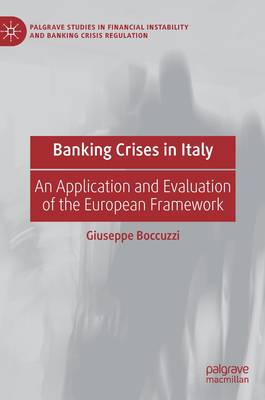
Door een staking bij bpost kan je online bestelling op dit moment iets langer onderweg zijn dan voorzien. Dringend iets nodig? Onze winkels ontvangen jou met open armen!
- Afhalen na 1 uur in een winkel met voorraad
- Gratis thuislevering in België vanaf € 30
- Ruim aanbod met 7 miljoen producten
Door een staking bij bpost kan je online bestelling op dit moment iets langer onderweg zijn dan voorzien. Dringend iets nodig? Onze winkels ontvangen jou met open armen!
- Afhalen na 1 uur in een winkel met voorraad
- Gratis thuislevering in België vanaf € 30
- Ruim aanbod met 7 miljoen producten
Zoeken
€ 105,45
+ 210 punten
Uitvoering
Omschrijving
This book offers the first original study on banking crises management in Italy from 2014 to 2020 with a comprehensive overview of the resolution tools used. In Italy, the issue of banking crises is now the focus of attention, not only as a result of the cycle of crises that occurred in the years 2014-2020 but also because of the banking reform carried out in Europe with the directives on bank recovery and resolution and the implementation of the Single Resolution Mechanism and the Single Resolution Fund within the framework of the Banking Union. The Italian banking crises have been managed by applying the new European regulatory framework; in this sense they constitute a significant test to assess its effectiveness and coherence. This book, divided into two parts, makes an initial assessment of the crisis situations and the application of the new rules, and offers an initial evaluation of their functioning. In the first part, an in-depth examination is made of the various cases of crisis, following a methodology of classification by type of solution and instruments adopted. The second part is dedicated to lessons learned and open issues. In detail, the most sensitive issues of the current debate are addressed, relating to the improvement of the institutional set-up and the rules for crisis management, the harmonization of insolvency rules in Europe, the funding of resolution, public intervention and, finally, the role of deposit guarantee systems. An articulated and complex picture emerges with various areas for improvement and policy indications, offering a framework that will be of interest to scholars, researchers, professors, students and practitioners of banking and banking regulation.
Specificaties
Betrokkenen
- Auteur(s):
- Uitgeverij:
Inhoud
- Aantal bladzijden:
- 259
- Taal:
- Engels
- Reeks:
Eigenschappen
- Productcode (EAN):
- 9783031013430
- Verschijningsdatum:
- 27/08/2022
- Uitvoering:
- Hardcover
- Formaat:
- Genaaid
- Afmetingen:
- 148 mm x 210 mm
- Gewicht:
- 485 g

Alleen bij Standaard Boekhandel
+ 210 punten op je klantenkaart van Standaard Boekhandel
Beoordelingen
We publiceren alleen reviews die voldoen aan de voorwaarden voor reviews. Bekijk onze voorwaarden voor reviews.











